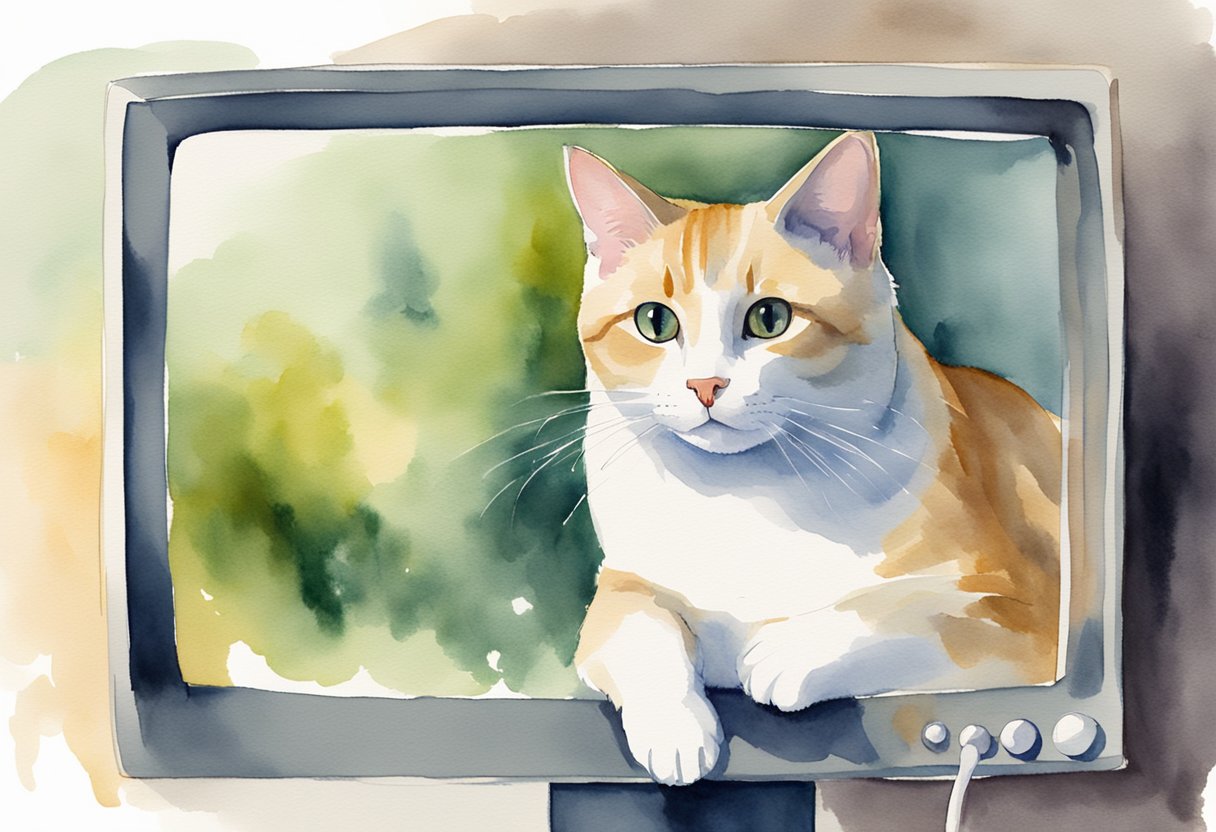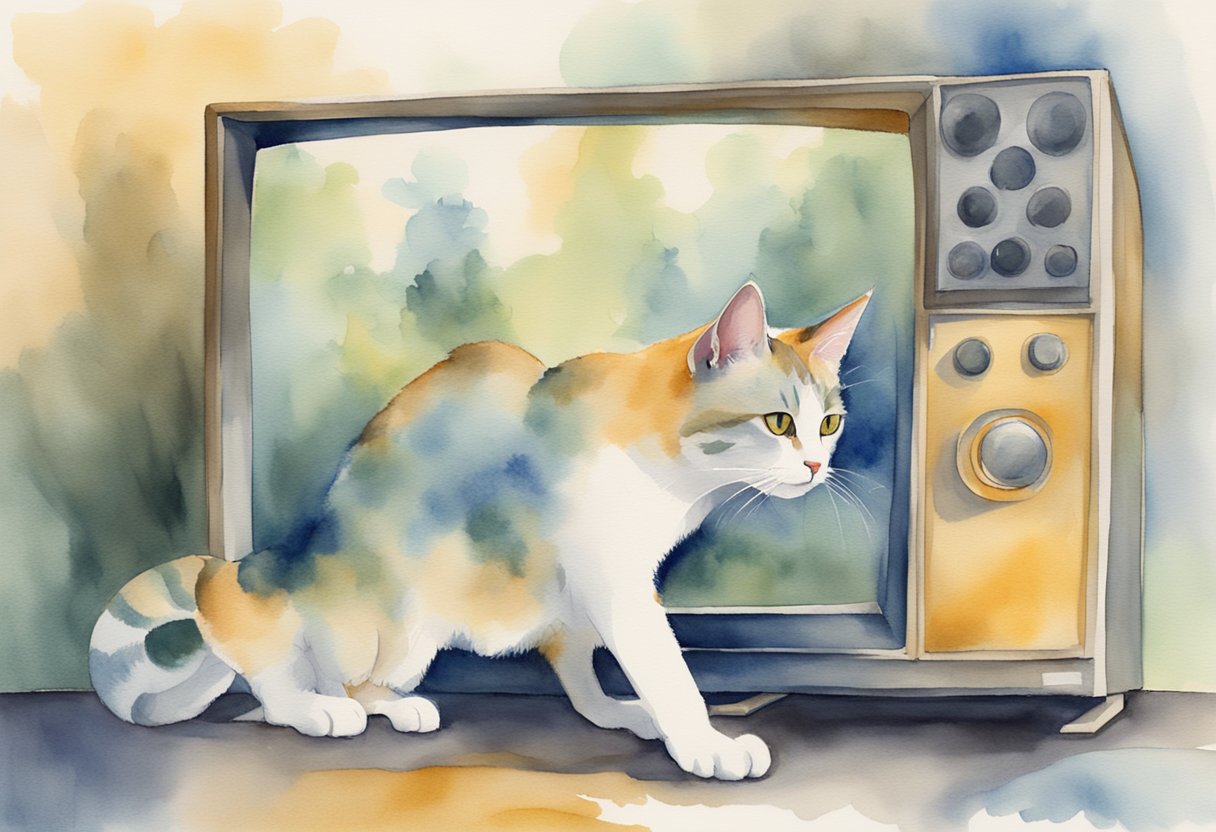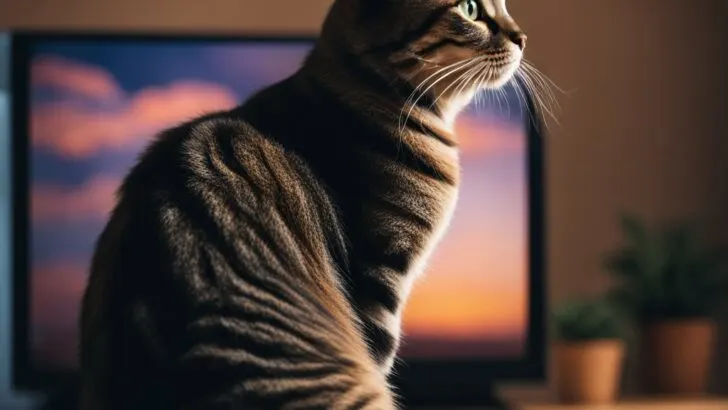Cats exhibit a fascinating response to television, often appearing to be genuinely engaged with the images and sounds emitted from the screen. This indicates that they perceive the screen as a source of visual cues, though it’s unclear to what extent they understand the videos in context.

Your cat’s behavior towards the television can vary based on their personality and age. Younger cats and kittens are more likely to be captivated by the moving pictures and may even attempt to interact with the characters or objects on the screen, suggesting a level of interest and interaction.
In contrast, older cats might seem indifferent, possibly due to their reduced sensory capabilities or simply a more laid-back personality.
When it comes to TV, cats are likely reacting to the motion and sounds without fully comprehending that they’re watching a two-dimensional representation. They may recognize familiar shapes and movements that trigger their innate hunting instincts.
Understanding Cat’s Perception of Videos

When you flip on a video and your cat seems to take interest, you might wonder what’s going through their mind.
Vision and Color Recognition
Cats have a vision that’s incredibly attuned to motion and can see well in low light. Their eyes have fewer cone receptors than humans, which affects how they perceive color broadly in the blue and yellow ranges.
They may not see the vibrant reds and greens that you do, but they can certainly detect variations in brightness and motion in videos. Cats also have excellent depth perception, which helps them in real-life hunting and potentially makes certain types of video content more engaging for them.
Hearing and Sound Response
Your cat’s hearing is very sensitive; they can hear higher-pitched sounds and even detect the slightest rustle that human ears can’t. Loud noises from videos might startle them, but the curious chattering of birds or the scampering of rodents can pique their curiosity.
Cognitive Processing and Interest Levels
Cats are intelligent creatures with a significant capacity for curiosity, but whether a video holds their interest depends on many factors. Each cat has a unique level of intelligence and recognition, affecting how they process the content.
Some may watch intently, trying to ‘catch’ the figures darting across the screen, while others may glance and walk away. Cats may not understand the context of videos as humans do, but certain content, like videos of small animals or birds, can appeal to their instincts.
Implications of Cats Watching TV
When you turn on the TV, your feline friend may show interest, often for the flickering movement and fast-paced action on the screen. This can have a range of behavioral effects and provide mental enrichment, but it’s important to tailor their viewing experience for the best outcome.
Behavioral Effects and Enrichment
Your cat’s regular engagement with TV can lead to positive behavioral impacts. Fast-moving objects and prey-like figures can stimulate their natural hunting instincts.
For indoor cats, particularly, watching TV serves as environmental enrichment, helping reduce boredom and anxiety by offering a window to the outside world, full of visual stimuli that can lead to playtime. To maximize the benefits:
- Choose programs with lots of movement, such as those featuring small animals or nature scenes to engage their hunting instincts.
- Ensure the playback has a high refresh rate, so the flickering or motion blur does not distract or confuse.
Interaction with Screens and Toys
Cats may try to interact with the TV by staring, swatting, or scratching at the screen, mimicking behaviors they would use when hunting real prey. It’s fascinating how screens and toys can be used together to encourage this natural behavior:
- Use a tablet or TV as a ‘digital toy’ by playing a cat TV video, which typically involves animations designed to attract your cat’s attention.
- Offer real toys that can be used in tandem with the on-screen action to prevent them from scratching the screen and to provide physical exercise.
Choosing Appropriate Content for Cats
Selecting the right content is crucial for your cat’s viewing pleasure and safety. Some key points to consider include:
- Avoid overly loud or fast-paced programs that might overstimulate or stress your cat.
- Look for videos with a higher frames per second rate to avoid flickering images that can cause discomfort or disinterest.
- Observe your cat’s reaction to different types of content to find what holds their interest. Content with birds, fish, or small animals often mimics the movement of prey and can be particularly engaging.

My name is James, and welcome to FAQCats!
Along with our team of cat owners, expert pet enthusiasts, and pet professionals, we aim to write engaging helpful, engaging content about cats. At FAQCats we strive to provide content that’s accurate and fun to read. Our team writes about everything related to cats; even the most complex of topics. Through extensive research and caring for our own fur-pals, we’re able to provide something cat owners worldwide will love. Have a look around, and leave us feedback anytime!

